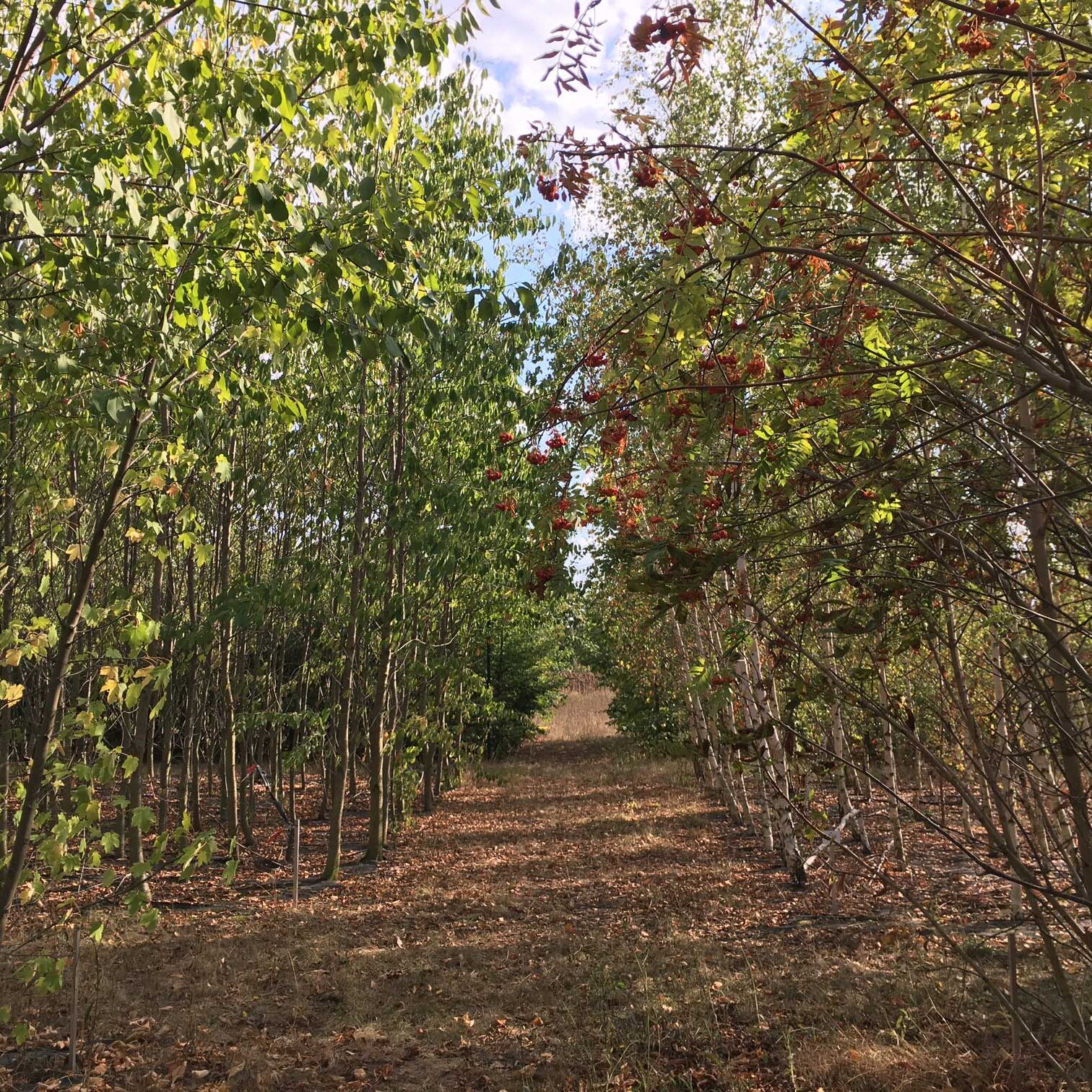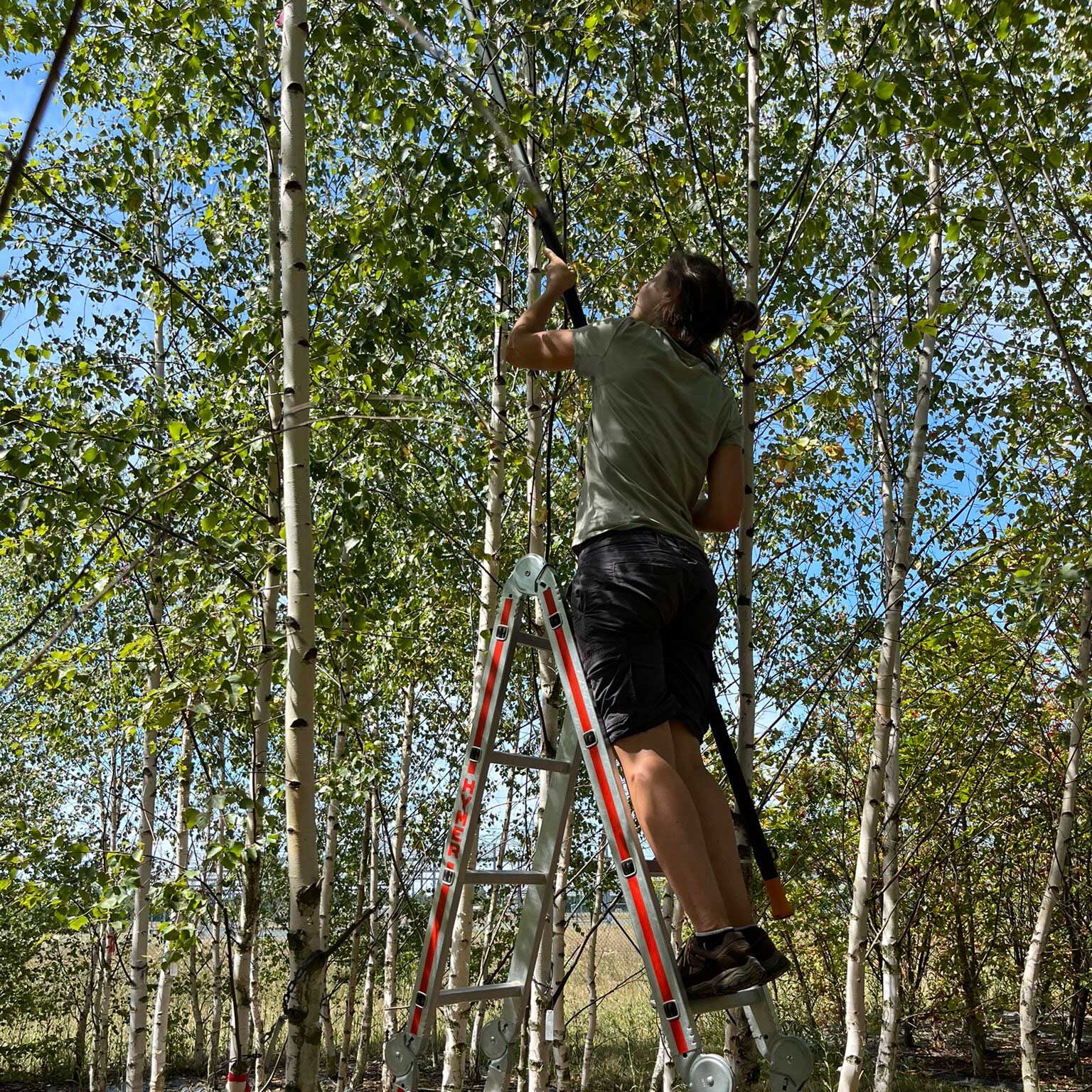Droughts are having a major impact on Europe’s forests — and climate change could make them even more frequent. But diversity helps: a new study led by the German Center for Integrative Biodiversity Research (iDiv) and Leipzig University shows that forests are more resistant to drought when trees employ different strategies for using water. The decisive factor is not only how many species are present, but how differently they absorb, store, and use water.
As part of the MyDiv tree diversity experiment in Bad Lauchstädt (Saxony-Anhalt), the research team studied the growth of 2,611 trees from ten European species over six years (2016–2021). This period included the unusual drought from 2018 to 2020, which affected forest stands across Europe.
Using 14 hydro-functional traits that describe how trees transport, store, and regulate water, the researchers analysed changes in individual trees’ growth rates. Trees follow different strategies for using water: some species, such as oak, cope relatively well with drought, while others, such as birch, are more sensitive to prolonged dry conditions.
Diverse hydro-functional strategies stabilize forest stands
The results show that trees with high hydraulic safety — that is, those whose vascular tissue remains functional even during severe drought — and trees that can precisely close the tiny pores in their leaves (stomata), showed stronger growth in drought years than trees with opposite water-use strategies. Under normal conditions, however, these same trees were at a disadvantage.
This shift in performance between wet and dry years illustrates a fundamental ecological trade-off. “There is no single strategy that always leads to more growth,” explains lead author Lena Sachsenmaier, a doctoral researcher at iDiv and Leipzig University. “What is disadvantageous under normal conditions can become a decisive advantage in years of drought.”
Trees benefit from diverse neighbours
Another key finding is that during droughts, trees benefit from neighbours with different functional characteristics. When neighbouring trees pursued different strategies for dealing with water, they grew better in dry years than those surrounded by neighbours with similar hydro-functional strategies.
“In extreme drought years, it is best for a tree when its neighbours have completely different characteristics in terms of water use,” Sachsenmaier says. “The decisive factor is not how many species are present, but how different their drought strategies are.”
Different hydro-functional strategies therefore act as a natural insurance against drought. “If we pay specific attention to these differing strategies during forest conversion, we can likely increase their stability in the face of drought,” Sachsenmaier adds.
Strategies to make forests fit for the future
The results provide valuable insights into how European forests can adapt to climate change. In practical terms, this means that mixed forests with species employing different hydro-functional strategies could remain more stable on average than homogeneous stands.
“Our MyDiv study shows that protecting forests in the face of climate change is not only a question of species diversity, but also of functional diversity,” says senior author Christian Wirth, founding director of iDiv and professor at Leipzig University. “However, we still know too little about the hydro-functional strategies of our native trees — and of the species that may migrate here due to climate change. That is why we are now studying water relations of almost 100 different tree species in our ARBOfun research arboretum. By restructuring forests so that different strategies work together, we can make them fit for the future.”
Since 2015, researchers have been studying approximately 11,200 trees at the MyDiv experiment in Bad Lauchstädt to examine how relationships between different tree species, mycorrhizal types, and ecosystem functions develop over time. The study was funded by the German Research Foundation (DFG; FTZ-118), among others.
Original publication
(Researchers with iDiv affiliation and alumni bolded)
Lena Sachsenmaier, Florian Schnabel, Fon R. Tezeh, Pablo Castro Sánchez-Bermejo, Nico Eisenhauer, Olga Ferlian, Sylvia Haider, Ronny Richter, Sharath S. Paligi, Bernhard Schuldt, Christian Wirth (2025). Hydro-functional traits and their dissimilarity to the neighbourhood buffer tree growth against the 2018-2020 Central European drought. Global Change Biology, DOI: 10.1111/gcb.70588
Contact
Lena Sachsenmaier
German Center for Integrative Biodiversity Research (iDiv) Halle-Jena-Leipzig
Leipzig University
lena.sachsenmaier@idiv.de
Prof Dr Christian Wirth
Head Systematic Botany and Functional Biodiversity at Leipzig University
German Center for Integrative Biodiversity Research (iDiv) Halle-Jena-Leipzig
cwirth@uni-leipzig.de
+49-341-97-38590
Kati Kietzmann
Media and Communications
German Center for Integrative Biodiversity Research (iDiv) Halle-Jena-Leipzig
kati.kietzmann@idiv.de
+49-341-97-39222
MyDiv experimental plots during drought summer 2022
Sampling of top-canopy leaves in a MyDiv birch monoculture for analysis of leaf traits
Please note: Use of the pictures provided by iDiv is permitted for reports related to this media release only, and under the condition that credit is given to the picture originator.

